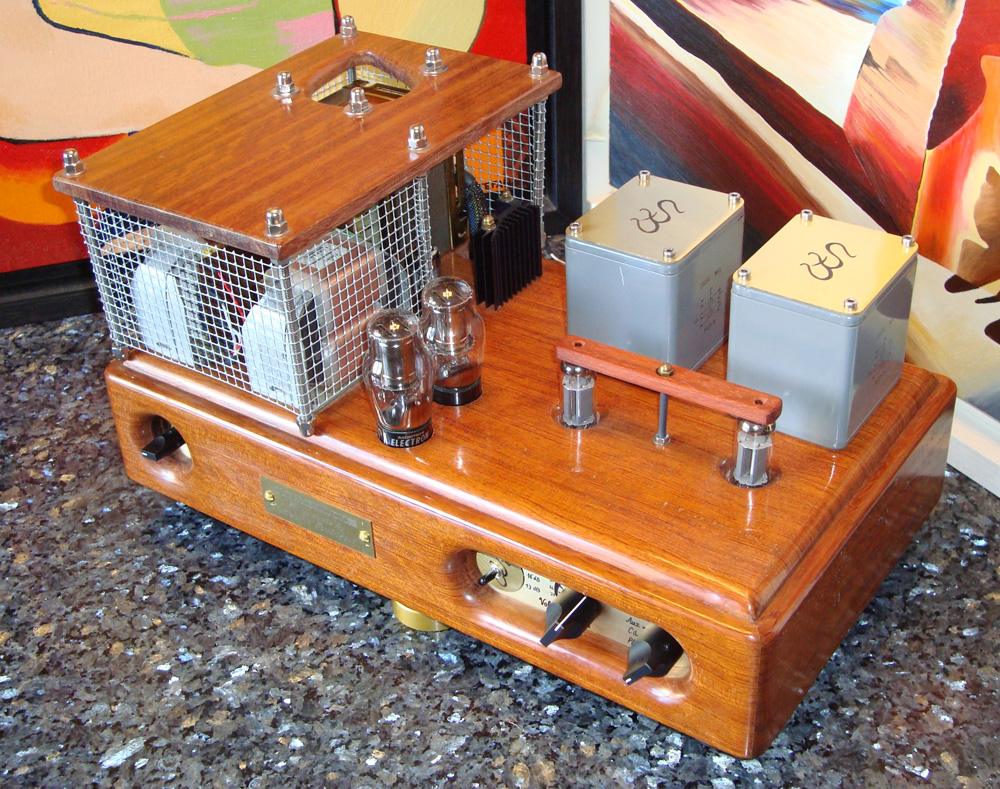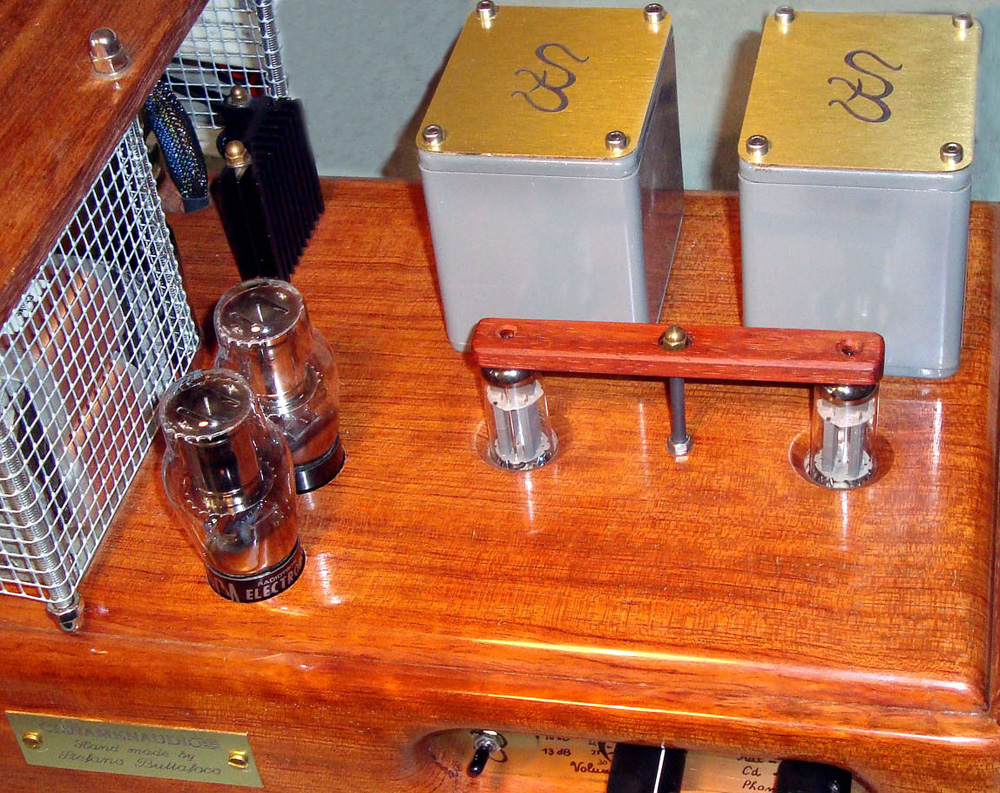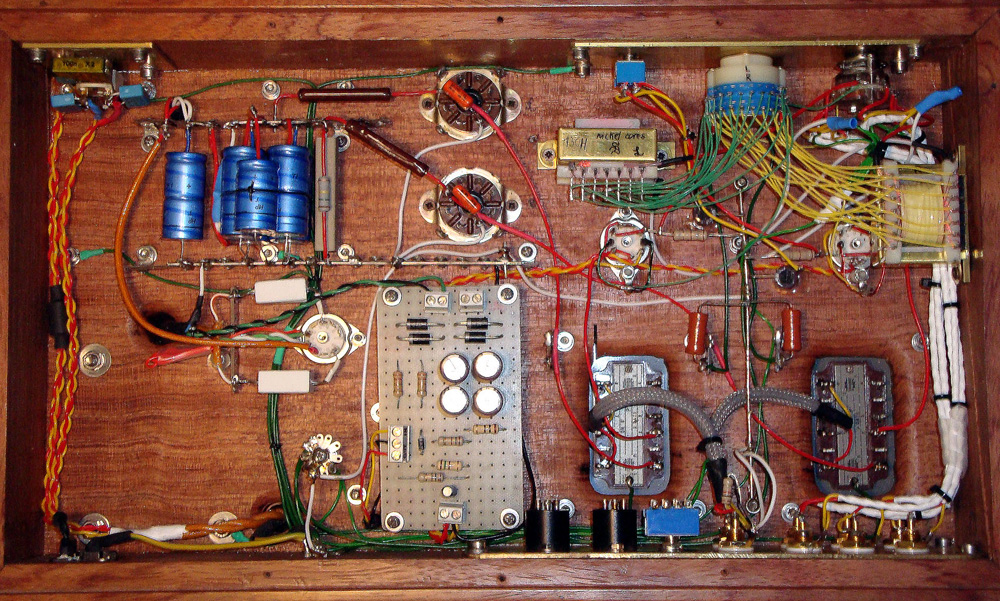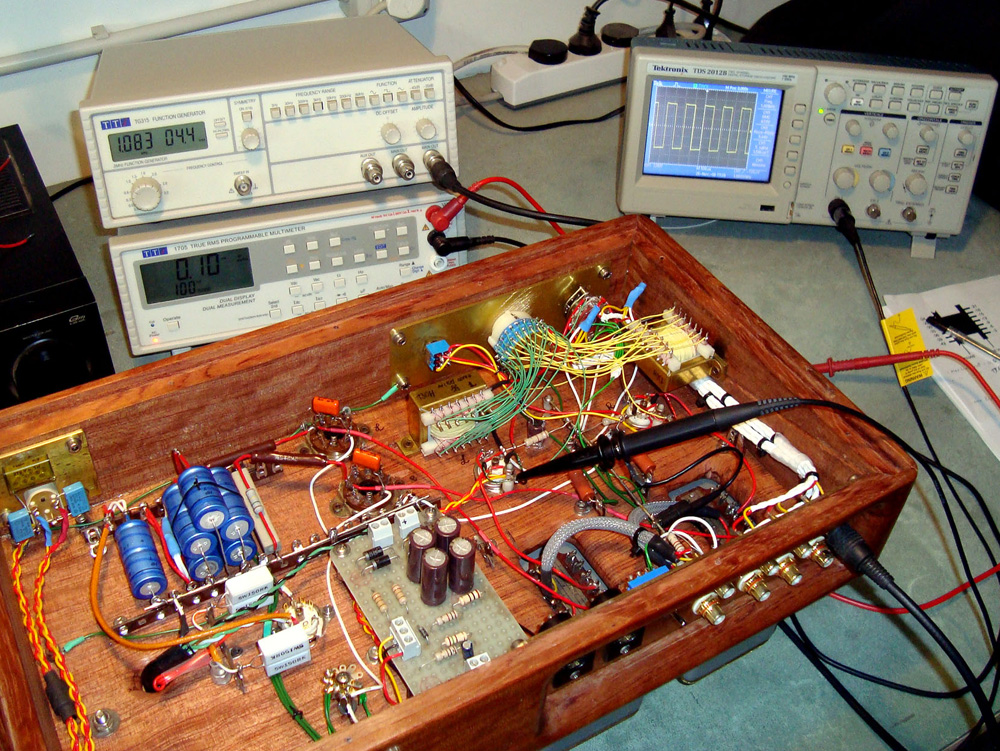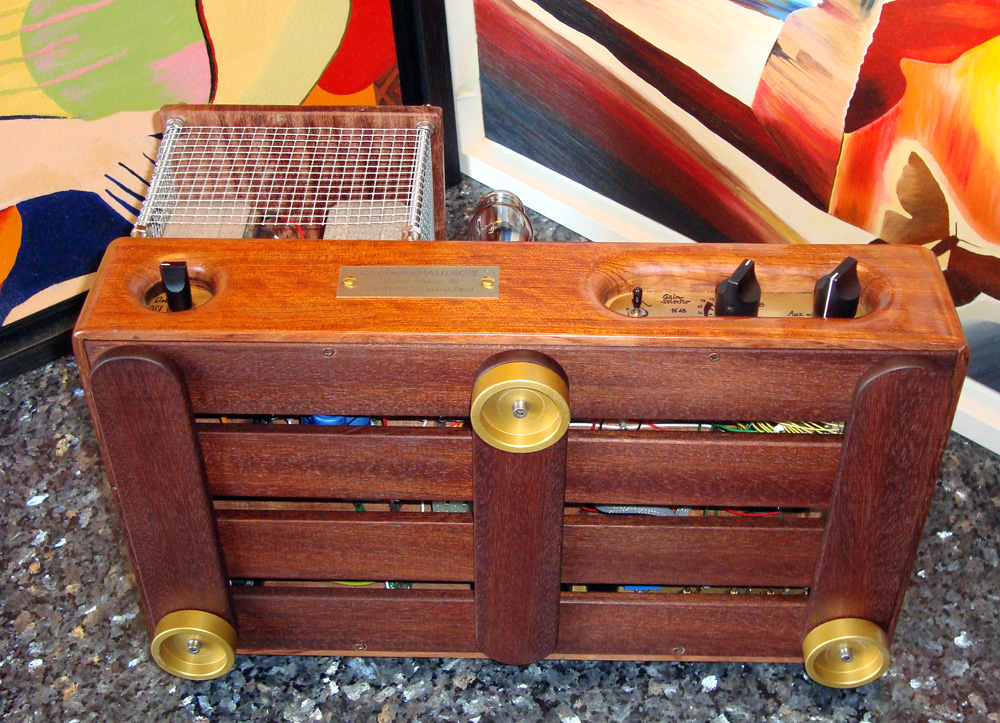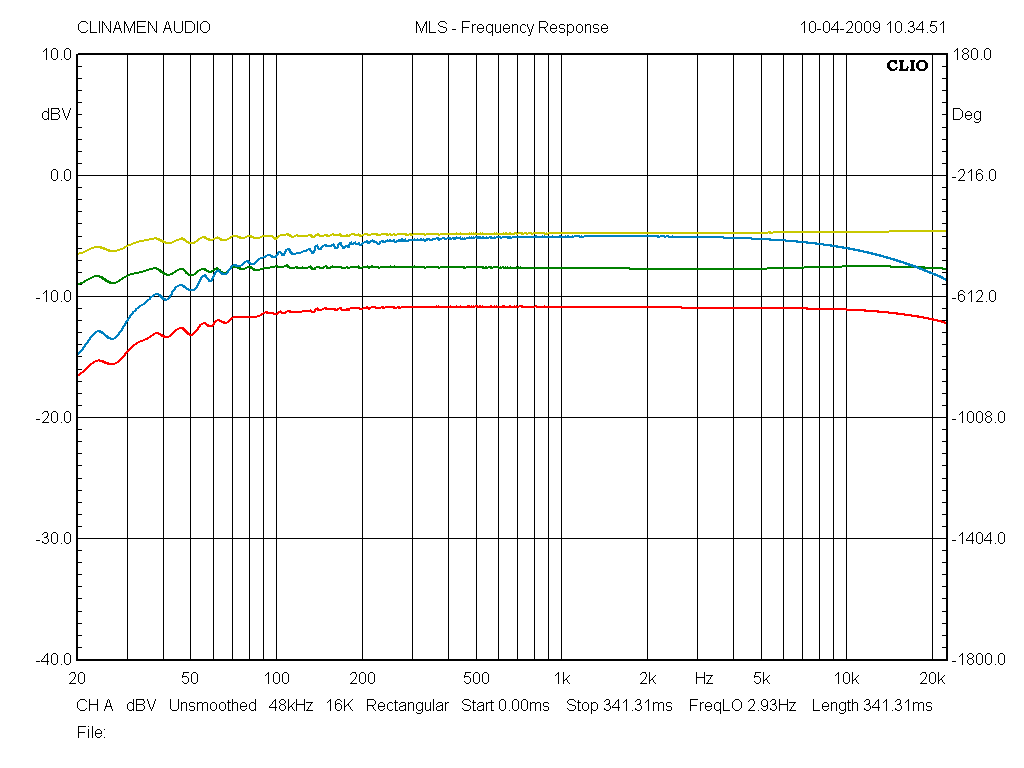Home |
Clinamen | Philosophy | Customer reviews | White paper | Partners | Pricing policy | Contact

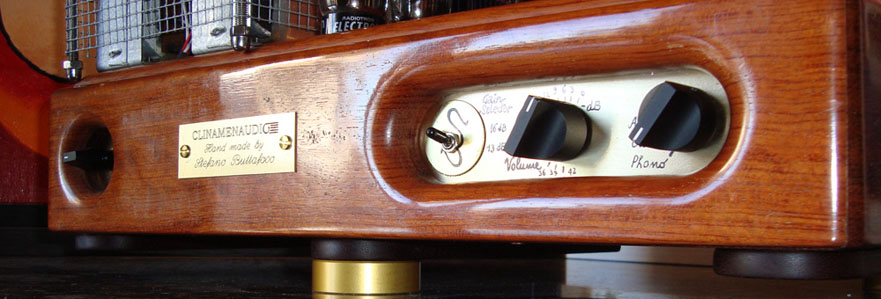
"Kavazinga" line preamplifier
Kavazinga is a music machine that tries to convey the emotion of live music unspoiled. The name of this preamp comes from the wood used in the frame, Kavazinga (better known as Bubinga in English, Note of the Translator).
The whole frame is made from solid Kavazinga polished with natural shellac; this wood has excellent harmonic characteristics. As well as being beautiful, it restricts the propagation of vibrations and the linking of the scattered flows of the transformers that always affect the performance of metal frames. All the visible plates are made of brass and are screen printed.
The audio circuit is simple but not common, in pure Clinamen style. We have a single ended parallel of triodes with high trans-conductance and excellent linearity. The parallel of the internal sections increases the trans-conductance of the equivalent stage and as a consequence it helps the coupling with the output transformer TAMURA (in this project I used a good commercial iron; I usually use custom iron with a nickel core).
Thus I was able to obtain a primary inductance of the transformer above the real needs of the triode it is coupled with; this ensures a record reproduction of the low range, up to 10 Hz, with an extremely high quality factor and extremely low phase rotations. A unique feature of the sound reproduced by ‘Kavazinga’ in virtue of the technical choices above described is indeed the prestige and control of the low register.
The output impedance is 600 ohms. The power supply is quite impressive; I consider it fundamental especially when the audio circuit is single ended being very sensitive to the quality of power supply and having a low PSRR.
The power supply transformer is extensively oversized and it works on low values of magnetic induction in the magnetic gap and low density of current in the conductors, to the advantage of low vibrations irradiated and low exercise temperatures. Furthermore it enjoys an electrostatic screen and a copper band to minimize dispersed flows. The rectification is implemented through a vacuum diode EZ81/6CA4, but the true note of difference from the rest of the esoteric worldwide production is the type of filtering, INDUCTIVE INPUT. As far as I know only Audio Tekne and Aloia use it in their top of the range products. This kind of filtering is much more expensive because it needs higher tensions and particular filtering coils (swinging chokes that must be able to tolerate high ripple AC tensions at their input); but it has an excellent control, allows it to virtually separate the power supply circuit from the audio circuit and the absorption peaks that characterize 99% of the capacitive filtering disappear (fewer spikes for irradiated RF, less stress for the power supply transformer). Another filtering cell follows; it brings the ripple to values lower than 5mV RMS.
In order to improve even further the sonic and electrical features of the preamp there are two gas charged diodes which stabilize the tension of anodic power supply, independently for the two channels.
The entire power supply is surrounded by a metal grid and is topped off with a wooden plate made from solid Kavazinga.
The volume control is extremely elegant; it is implemented by an inductive control with a nucleus made of a special nickel-based alloy (80% nickel-iron-molybdenum). The secondary coil has sockets through which it is possible to collect part of the signal applied in input. This kind of volume control doesn’t introduce dispersions and losses on the signal, like the traditional resistive volume controls, to the advantage of micro-dynamics and the respect of the harmonious whole of the musical signal.
Finally there are two switches; one of them acts on the input stage and varies the gain between 13 and 16 dB (also changing the response in low range). The other selector allows us to charge differently the secondary winding of the output transformer and it is possible then to customize the sonority of preamp and the performance of the extreme low. The four types of response have been captured through Clio and they are visible in the data sheet.
Of course the wiring is point to point and the filaments of the triodes are fed in stabilized continuous current.
The base of the device is built with slats of solid mahogany impregnated with straw oil and finished with wax.
Technical data
- 3 inputs (RCA)
- Output, one , Z= 600 ohm
- Parallel singe ended circuit, with output transformer
- 0 feedback
- 0 capacitor in the signal path
- Inductive PSU , with vacuum tube rectifier EZ81
- Stabilized anodic PSU with discharge tubes
- Stabilized filament PSU
- Inductive volume control with Nichel core transformer
- Gain : 13 o 16 dB switchable
- whole frame made from solid Kavazinga
- mahogany bottom cover
- Point to point wired
- Maximum Output voltage= 20 Volt rms
- Bandwidth : 10 Hz - 45 Khz
- Power consumption: 52 watt
Vacuum tubes:
- 1 x EZ81
- 2 x E182CC
- 2 x 0D3
Frequency response:
|
curva |
Selettore frontale |
Selettore posteriore |
|
Verde |
16 dB |
Resistenza |
|
Rosso |
13 dB |
Resistenza |
|
Giallo |
16 dB |
Capacità |
|
Celeste |
13 dB |
Capacità |
![]() Brochure Pre linea E182CC transformer coupled.pdf
Brochure Pre linea E182CC transformer coupled.pdf

